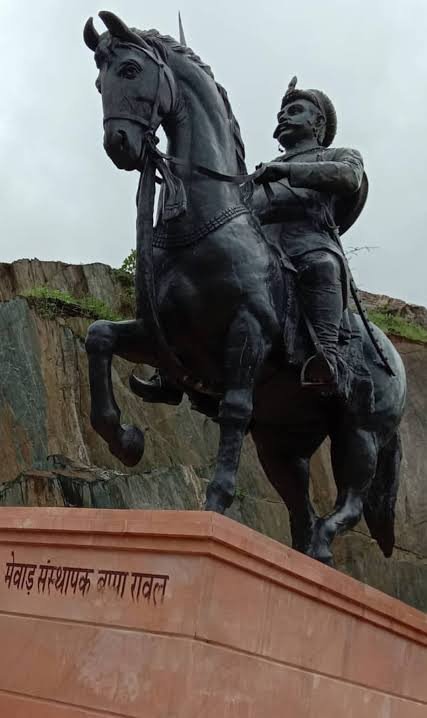The unforgettably forgotten Hindu King – Bappa Rawal


This is the first of the Mewar’s Rawals and Ranas series:
There can be no mention of the late 1st Millennium CE without Bappa Rawal. He lived for 40 years (713-753CE) but his contribution to the vast Indic landscape is unmistakably remarkable and inspiring.
He was born as Kaalbhoja to Nagaditya and Kamlavati of the Guhilot clan which claimed lineage from Sri Rama’s son Lava. The 1400 year long struggle of the Guhilot-Sisodiya dynasty starts from Bappa Rawal.
His childhood was riddled with pain. Due to some circumstances, his mother brought him to a forest where he grew up with the tribal Bheels who took care of him. Thus, the seed of the long relationship between the tribal Bheels and Mewar rulers was planted.
Upon the command of Harit Rishi, Bappa conducted severe penance for Ekling, a form of Prabhu Shiva. After getting blessings from Maa Bhavani in his dreams, he started working under the Mori Rulers of Chittorgarh.
During the same period, Sindh was attacked by the first Islamic invasion of Bharat by Mohammad Bin Qasim, a general of the Khalifa. This Arabian invasion was repelled many times by the great Sindhi King Raja Dahir. The Buddhists in the region changed camps and supported Qasim giving him vital information to defeat Raja Dahir. And defeat he did in a fierce battle. Dahir’s whole family was wiped out and his daughters were taken captives as slaves to offer the Khalifa.
After Sindh, Qasim turned towards the region of Mewar in Rajasthan. James Todd, the chronicler of ancient Rajasthani History, writes that Dahir’s one son survived and escaped to Chittorgarh where he recounted the inhuman atrocities committed by Qasim. Rapes were unheard in Bharat’s battle history. The Arabs also didn’t observe any rules in war.
Sensing a major war, Bappa Rawal created a friendship with the King of the mighty Gurjara Pratihara king Nagabhatta, the Gujarat’s king Jaybhatta and the Navsari Chalukyas’ Avanijanashraya Pulakeshin.
Qasim returned to Arab and left the further conquest of Bharat in the hands of Junaid Al Marri. He saw initial success in his campaigns in southern Rajasthan, Gujarat and Malwa (MP). But then under the command of Bappa Rawal, 6000 soldiers fought a bloody battle in Mandovar, Rajasthan against an Arab army 10 times larger and defeated them mercilessly. Junaid was slayed. The slew of defeats for Arabs who had conquered the mighty kingdoms in Mesopotamia, Persia, Egypt, Syria and Northern Africa. The Arab chroniclers themselves mention, “We cannot find a single place to hide from the wrath of the Hindus”.
Bappa Rawal then led a contingent of strong warriors and chased the Arabs to Iran. He defeated a local vassal of Qasim, Salim, in Ghazni and married his daughter. He left his nephew to rule Ghazni. To discourage further invasions, Bappa constructed big watchtowers all the way to Iran, some of which are still standing in some parts of Pakistan.
In 726 CE, Bappa overthrew the Mori rulers of Chittorgarh and hence established the Mewar Dynasty which still exists till date. Later, he fought 70 small battles in the span of 5 months to assuage instability in the Peshawar -Lahore region. Khyber was handed over to the Rajputs. Rawalpindi is named after Bappa Rawal. The Pathans of Nowshera are progenies of Bappa and his consorts whom he married in the region.
Everybody remembers Charles Martel who similarly stopped the Arabian onslaught into Gaul during the same period but we have forgotten Bappa Rawal’s contribution.
Kaalbhoja was called Bappa or ‘father’ by his subjects out of love, respect and admiration for the sacrifices he did. Let’s not forget him.
*The inspiration to write this is Shri Dr. Omendra Ratnu Ji’s book Maharana. I can’t thank him enough for writing this and I dedicate this and other posts under this series to him.
DISCLAIMER: The author is solely responsible for the views expressed in this article. The author carries the responsibility for citing and/or licensing of images utilized within the text.
